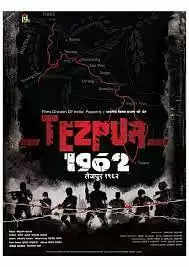These films reveal the cultural and social dimensions of Northeast India like never before!

The visual basis of films give it an universal power of communication. With the passage of time, films become cultural artifacts getting shaped in time by specific cultures. They reflect the cultural attributions of a particular region in a specific time frame. Also films continue to be considered as a mass source of popular entertainment, education and amusement. But,the reality is not as smooth.A New York Times article has stated that around 90 percent of all American Silent Films made before 1929 and 50 percent of American Sound Films made before 1950 are 'lost films' where no part of print is known to have survived.

According to estimates, around 10 films could survive in India out of 10,000 films made in the Silent Era. Films like" Alam Ara" (1931), "Savkari Pash" (1925), "Balidan"(1927), "Khoon ka Khoon" (1935) reveal the darker side of facts in which these films could not be preserved and not even a single print survives. Important among these are the likes of "Alam Ara" which has been credited for being India's first talkie which incorporated sound technologies.Completing 85 years of its release, it remains the landmark shift of India's cinematic experience. Baburao Painter's "Savkari Pash" is also equally relevant as the first Social Realist film of India. It managed to side-line the popular concepts of films made around Mythology at that time. The birth and inception of Parallel Cinema in India which was further taken off by it.
But, in Northeast India, potential representative of its cultural and social realities has been made through films which are yet to get regional attention. These films haven't been yet lost in time and pointedly draw from the social realities. A look at some of them will reveal the challenges, social realities and life around in the Northeast.
Film-maker Joseph Pulinthanath in his feature film "Yarwang" (2008) in Kokborok language has highlighted the large-scale displacement of indigenous people by a Hydel Project in Tripura in the 1970s. The director commented that the film was a result of the numerous encounters the team had with displaced people. He also added, "All the incidents and the emotional turmoil depicted in the film were based on true events and were included because we found that they were all etched in the subconscious psyche of the people. "Yarwang" is his second feature film in Kokborok and he had previously worked on his first feature titled, "Matei".
"Dau Huduni Methai" (2015) literally meaning 'Song of the Horned Owl' is a Bodo language drama film by director Manju Bora. According to a myth in the Bodo Community, an exploited man after his death transforms into a horned owl (Hudu) and comes back to his home and keeps calling from a tree. The film uses this myth as a metaphor to intensify the thematic development of the story. The film focuses on the social and political upheavals of the indigenous Bodo Community through the eyes of Raimali, a young rape victim. Borah has carefully structured the narrative and contrasted its disruption with local folklore with the background of separatist violence. This film garnered international recognition with screening at the Montreal World Film Festival.
"Tezpur 1962" This documentary has won the National Award for the Best Investigative Film in the Year 2016. Tezpur often referred to as the cultural capital of Assam was the hotbed during the Sino-India War of 1962. The town was evacuated due to assumptions of Chinese aggression. Since much information of the entire episode is not available, the film maker Samujjal Kashyap makes a great attempt in unearthing some of the most significant aspects of that time.
"The Head Hunter" (2015) is a film on a man of the Wancho Naga tribe who is lured to the materialistic world and abandons his traditional practice of head hunting. According to some Naga animist beliefs, human skulls did possess a life force that could ensure the prosperity of crops, animals and tribal clans. Thus head hunting was practiced heavily and the Nagas which only shifted when Christian missionaries made inroads into their Community. The director Nilanjan Dutta has portrayed the subject with total commitment to the aesthetics and it stands out as something which could be well lost in time.
Manju Borah has been a veteran in depicting the lives of the Missing communities belonging to Assam. In "Ko:Yad" (2012) Borah talks about the life of the protagonist Pokkam who lives by the river. The Missings have a oral tradition of communication and refer to the creator as 'Abotani'. In the year 1991, Gautam Bora had also made a documentary to disclose on the hardships faced by this community due to the various natural mishaps and poor infrastructural facilities. The documentary was titled, "Sons of Abotani".
"Riders of the Mist"(2015) is a documentary by Roopa Barua on a century old bareback pony racing tradition in the state of Assam, India. This documentary is a portrayal of the races as they unfold, the jockeys of the Missing Community and their lives and these ponies that become part of the tradition every year. This had opened to much acclaim and appreciation at the Hague Indian Film Festival.
For TNT News
(With inputs from www.scroll.in)
(Image courtesy : Internet sources ,Video links : Youtube)

















